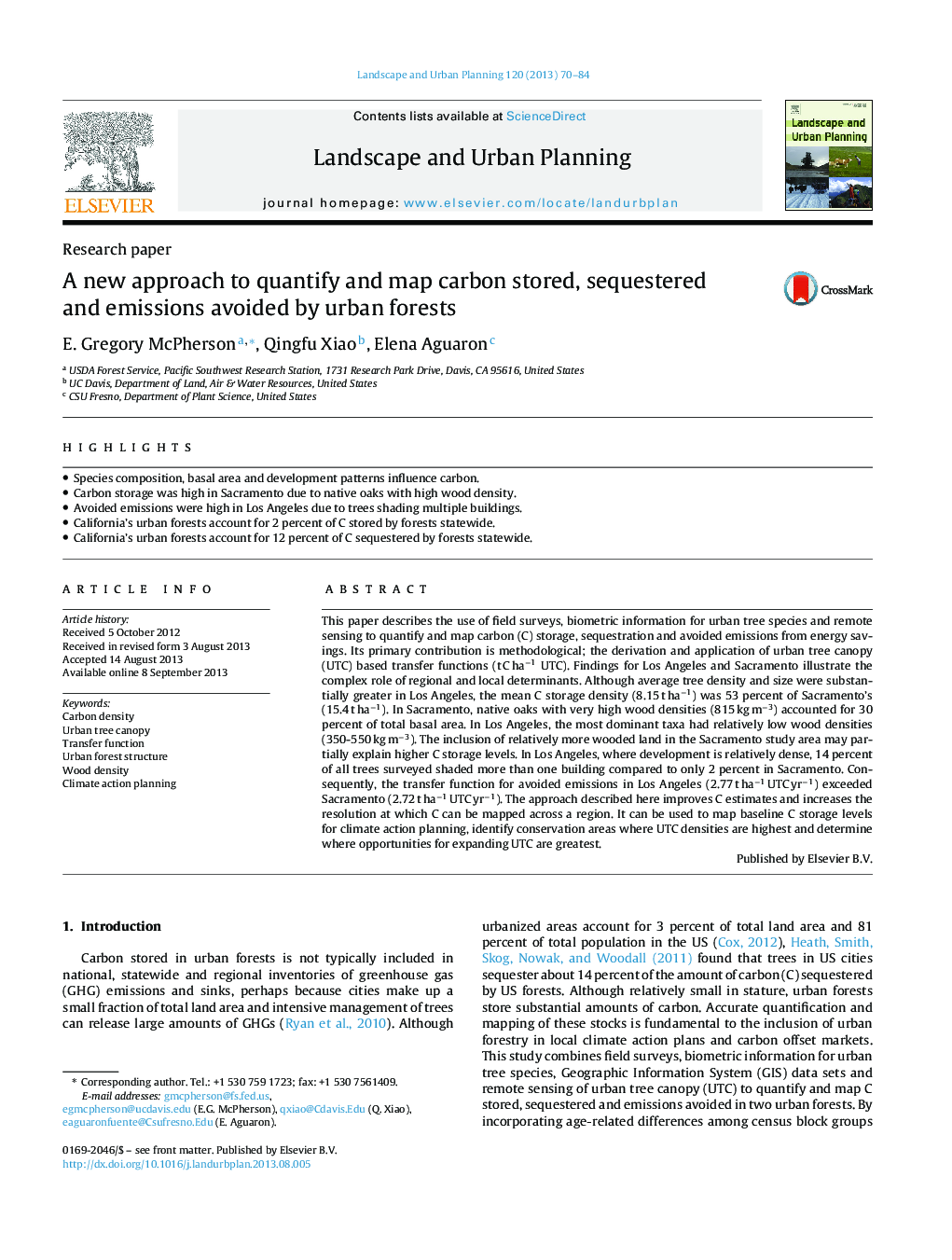| Article ID | Journal | Published Year | Pages | File Type |
|---|---|---|---|---|
| 7461768 | Landscape and Urban Planning | 2013 | 15 Pages |
Abstract
This paper describes the use of field surveys, biometric information for urban tree species and remote sensing to quantify and map carbon (C) storage, sequestration and avoided emissions from energy savings. Its primary contribution is methodological; the derivation and application of urban tree canopy (UTC) based transfer functions (t C haâ1 UTC). Findings for Los Angeles and Sacramento illustrate the complex role of regional and local determinants. Although average tree density and size were substantially greater in Los Angeles, the mean C storage density (8.15 t haâ1) was 53 percent of Sacramento's (15.4 t haâ1). In Sacramento, native oaks with very high wood densities (815 kg mâ3) accounted for 30 percent of total basal area. In Los Angeles, the most dominant taxa had relatively low wood densities (350-550 kg mâ3). The inclusion of relatively more wooded land in the Sacramento study area may partially explain higher C storage levels. In Los Angeles, where development is relatively dense, 14 percent of all trees surveyed shaded more than one building compared to only 2 percent in Sacramento. Consequently, the transfer function for avoided emissions in Los Angeles (2.77 t haâ1 UTC yrâ1) exceeded Sacramento (2.72 t haâ1 UTC yrâ1). The approach described here improves C estimates and increases the resolution at which C can be mapped across a region. It can be used to map baseline C storage levels for climate action planning, identify conservation areas where UTC densities are highest and determine where opportunities for expanding UTC are greatest.
Related Topics
Life Sciences
Agricultural and Biological Sciences
Ecology, Evolution, Behavior and Systematics
Authors
E. Gregory McPherson, Qingfu Xiao, Elena Aguaron,
